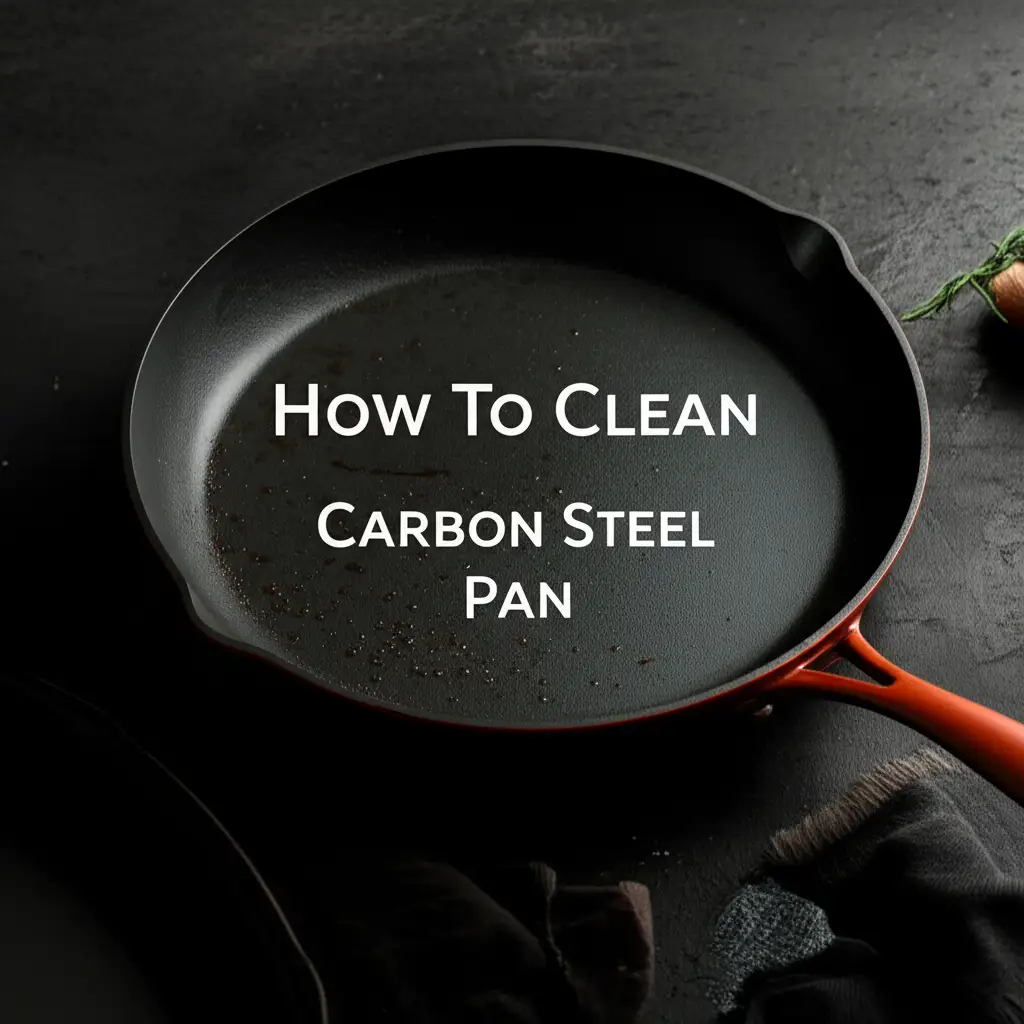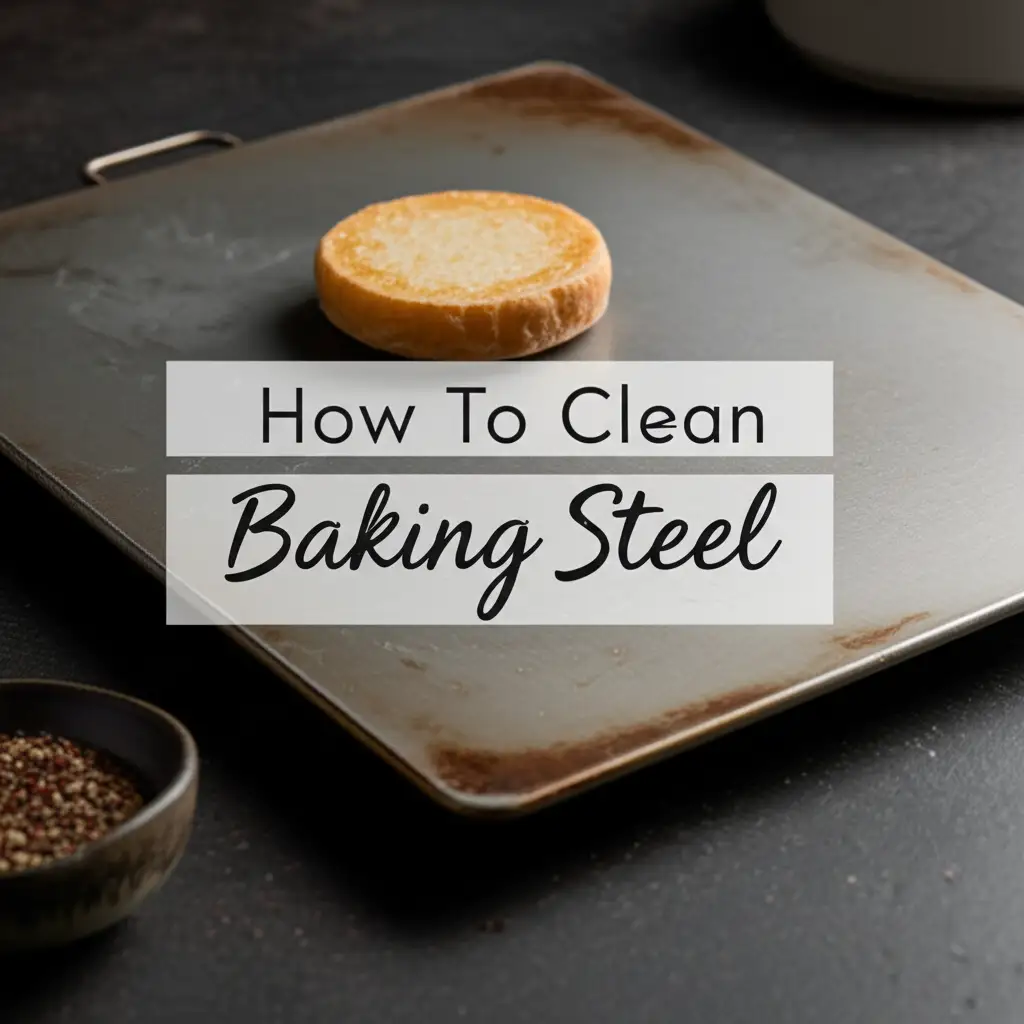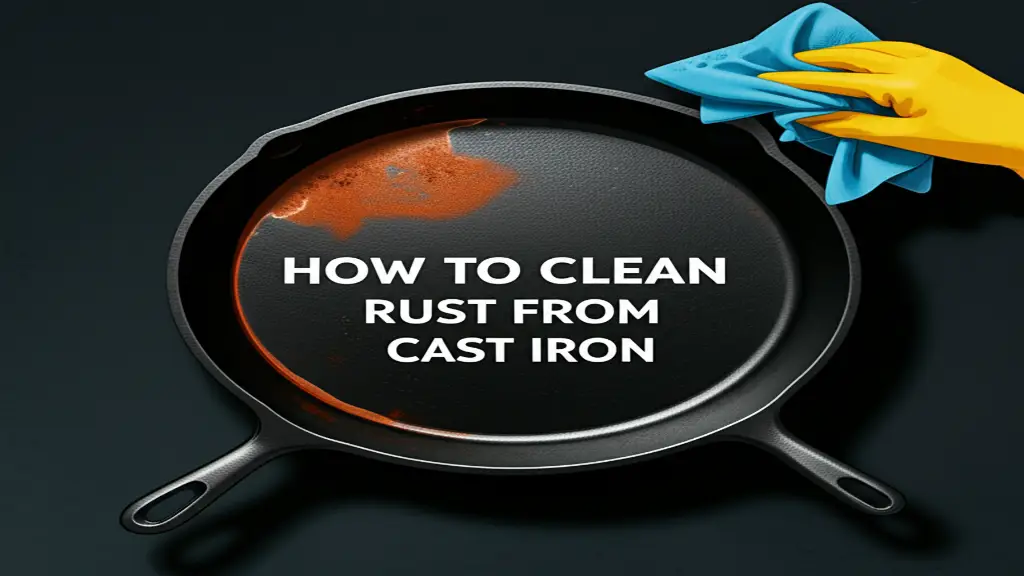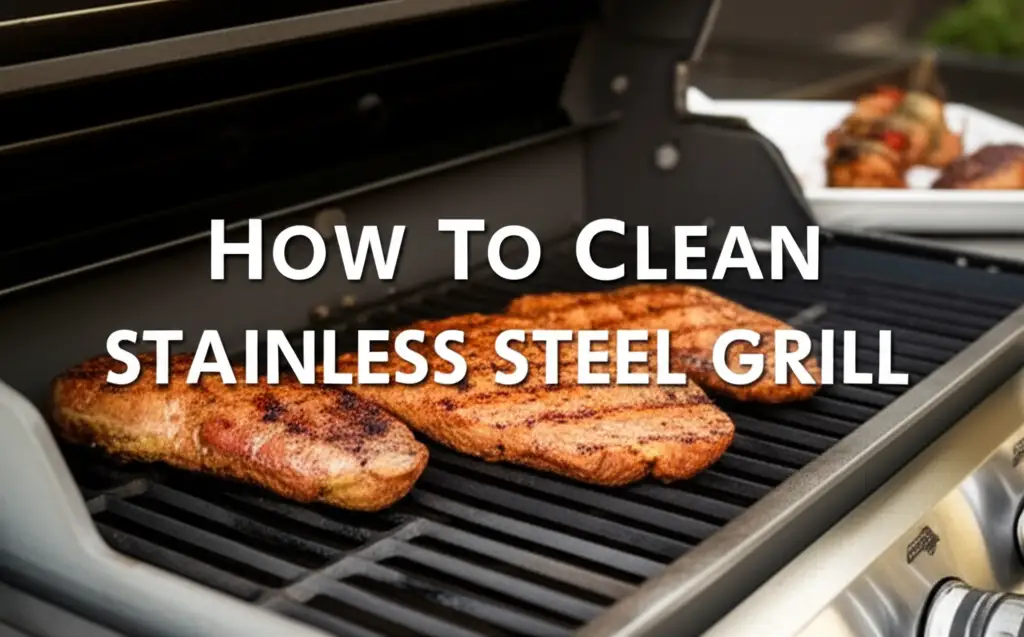· Cookware Care · 12 min read
How To Clean Carbon Steel Pan

How To Clean Carbon Steel Pan: The Ultimate Guide
Carbon steel pans are fantastic kitchen tools. They offer excellent heat retention and can last for decades. I love using mine for searing steaks and stir-frying vegetables. However, caring for them is different from cleaning stainless steel or non-stick cookware. Many people struggle with keeping their carbon steel pans in top condition.
This article provides a complete guide on how to clean carbon steel pan. We will cover daily cleaning routines, how to handle tough stains, and essential tips for preventing rust. We will also discuss the importance of proper seasoning and how to re-season your pan when needed. My goal is to help you keep your carbon steel pan performing its best for many years. You will learn practical steps to maintain its non-stick properties and protect its surface.
Takeaway:
- Clean your carbon steel pan immediately after use with hot water and a gentle brush.
- Avoid harsh soaps and abrasive scrubbers to preserve the seasoning.
- Address burnt-on food promptly using salt and oil or gentle scraping.
- Prevent rust by thoroughly drying the pan and applying a thin layer of oil after each wash.
- Regularly re-season your pan to maintain its non-stick surface and protect it.
To effectively clean a carbon steel pan, rinse it with hot water immediately after cooking. Use a stiff brush or non-abrasive scrubber to remove food debris. Avoid soap if possible, or use a very small amount, then dry the pan completely. Finish by applying a thin layer of cooking oil to preserve the seasoning and prevent rust.
Understanding Carbon Steel Pans
Carbon steel pans are popular with chefs and home cooks. They share many qualities with cast iron. Both materials offer great heat retention and get better with age. Carbon steel pans are lighter than cast iron. They also heat up faster. This makes them versatile for many cooking tasks. My carbon steel pan is a go-to for high-heat cooking.
The key to a good carbon steel pan is its seasoning. Seasoning is a layer of polymerized oil baked onto the metal surface. This layer creates a natural non-stick surface. It also protects the pan from rust. When you cook with a carbon steel pan, this seasoning continues to build. This makes the pan more non-stick over time. This unique quality makes carbon steel different from other pan types.
Proper care preserves this seasoning. Improper cleaning can strip it away. This leads to food sticking and rust forming. Understanding the nature of carbon steel helps you clean it correctly. It ensures your pan serves you well for many years. A well-maintained carbon steel pan becomes a kitchen favorite.
Essential Tools for Cleaning Carbon Steel
Having the right tools makes cleaning your carbon steel pan easy. You do not need many items. Simple tools work best for maintaining the pan’s seasoning. I keep these items handy near my sink. They are key to a quick and effective clean.
First, you need hot water. This is the primary cleaning agent for carbon steel. Hot water helps release food particles without stripping the seasoning. Next, a stiff brush is very helpful. A dish brush with natural bristles or a stiff nylon brush works well. This brush removes stuck-on food without scratching the surface. It gets into all the corners of the pan.
You also need a scraper or a flat-edged spatula. These are useful for stubborn bits of food. A wooden or silicone scraper is best. Metal scrapers can damage the seasoning. Finally, you need a clean cloth or paper towel. This is for drying the pan completely. A small amount of cooking oil is also essential for re-oiling the pan after cleaning. These simple tools ensure your pan stays in great shape.
Daily Cleaning Routine for Carbon Steel
Establishing a good daily cleaning routine keeps your carbon steel pan performing well. This routine is simple and fast. I follow these steps immediately after I finish cooking. Prompt cleaning is the best way to prevent food from sticking. It also protects the pan’s seasoning.
First, let the pan cool down slightly. Do not plunge a hot carbon steel pan into cold water. This can warp the pan. Once it is warm but safe to handle, rinse it with hot water. Use hot tap water to remove most food particles. You will see steam rise as the water hits the warm pan.
Next, use a stiff brush or a non-abrasive sponge. Gently scrub the pan’s surface. Most food should come off easily with just hot water and scrubbing. Avoid using harsh dish soap. Soap can strip the seasoning. If you must use soap, use a tiny drop of mild dish soap. Rinse thoroughly to remove any soap residue. Make sure the water runs clear. This quick process preserves your pan’s non-stick properties.
Dealing with Stubborn Food and Burnt Bits
Sometimes, food sticks more than usual. Or you might have some burnt bits on your carbon steel pan. Do not worry. There are effective ways to clean these off without damaging the pan. I have used these methods many times for stubborn messes. They work great.
One simple method uses salt. Add a generous amount of coarse salt to the pan. Then, add a small amount of cooking oil. Use a paper towel or a stiff brush to scrub the salt and oil mixture around the pan. The salt acts as a gentle abrasive. It helps lift the stuck-on food. The oil protects the seasoning. Rinse the pan with hot water afterwards.
For very stubborn burnt food, you can add some water to the pan. Bring the water to a simmer on the stovetop. Let it simmer for a few minutes. This softens the burnt bits. Then, use a wooden or silicone spatula to scrape them off. Be gentle. After scraping, follow with the salt and oil method if needed. Always remember to re-oil the pan after dealing with tough cleaning. This prevents rust and maintains the non-stick surface. If you ever have issues with burnt oil on other types of pans, some of the techniques for removing burnt residue might be similar, for example, when you want to learn how to clean burnt oil from stainless steel pan. Similarly, if you encounter burnt sugar from a pan, a similar simmering and scraping method can be effective.
Rust Prevention and Removal
Rust is the enemy of carbon steel pans. It happens when the pan is exposed to moisture without proper protection. A well-seasoned and oiled pan resists rust. But if rust does appear, you can remove it. I have dealt with rust on my pan before. It is fixable with the right approach.
The best way to prevent rust is thorough drying. After washing your pan, immediately dry it. Use a clean cloth or paper towel. Do not let it air dry. Water droplets cause rust. You can also place the pan on low heat on the stovetop for a minute or two. This evaporates any remaining moisture. Make sure the pan is completely dry.
After drying, apply a thin layer of cooking oil. Use a paper towel to spread a tiny amount of neutral oil (like grapeseed or vegetable oil) over the entire cooking surface. Wipe off any excess oil. The pan should look lightly shined, not greasy. This oil layer protects the seasoning and creates a barrier against moisture. For comprehensive pan care, including the exterior, consider techniques for how to clean bottom of pan.
If rust appears, use steel wool or a scouring pad. Scrub the rusted areas vigorously. This removes the rust. After removing rust, wash the pan with hot water. Dry it completely. Then, you must re-season the pan. Rust removal strips the seasoning from that area. Re-seasoning restores the protective layer.
The Importance of Seasoning and Re-Seasoning
Seasoning is the heart of a carbon steel pan. It is what makes the pan non-stick and protects it from rust. Over time, the seasoning builds up with proper use. This creates a beautifully dark, smooth surface. It is the secret to why carbon steel pans get better with age. I often tell people that seasoning is not just a coating; it is part of the pan’s character.
A well-seasoned pan releases food easily. It also requires less oil when cooking. The seasoning also prevents acidic foods from reacting directly with the metal. This protects both your food and your pan. Think of seasoning as a natural non-stick layer. It is durable when cared for correctly.
However, seasoning can get damaged. Using harsh soaps, abrasive scrubbers, or cooking very acidic foods can strip it. If your pan looks dull, food starts sticking, or rust appears, it needs re-seasoning. Re-seasoning is the process of baking new layers of oil onto the pan. It is a simple process.
To re-season, clean the pan thoroughly. Remove any rust or sticky residue. Dry it completely. Apply a very thin layer of high smoke point oil (like flaxseed, grapeseed, or vegetable oil) all over the pan, inside and out. Wipe off as much oil as you can. The pan should look almost dry. Then, bake the pan upside down in an oven at a high temperature (around 400-450°F or 200-230°C) for an hour. Let it cool in the oven. Repeat this process a few times for the best results. Each layer builds the protective coating. Remember that carbon steel items, like a carbon steel knife, also benefit from similar oiling practices to prevent rust.
Long-Term Care and Storage Tips
Proper long-term care ensures your carbon steel pan lasts a lifetime. It is not enough to just clean it after each use. How you store it also matters a lot. I always make sure my pan is ready for its next use. These tips help maintain its condition and performance over time.
First, always store your carbon steel pan in a dry place. Avoid humid environments. Basements or damp cupboards are not ideal. Moisture is the biggest enemy of carbon steel. It leads to rust. A kitchen cabinet or hanging rack in a dry area works best. Ensure good air circulation around the pan.
If you stack your pans, place a paper towel or a pan protector between them. This prevents scratches to the seasoning. Scratches can expose the bare metal. Exposed metal is prone to rust. The paper towel also absorbs any residual moisture. This provides an extra layer of protection.
Periodically, inspect your pan. Look for any dull spots in the seasoning or signs of rust. Address these immediately. A small touch-up seasoning on a dull spot can prevent bigger problems. This proactive approach keeps your pan in optimal condition. Regular use is also a form of care. The more you cook with it, the better the seasoning becomes. Your carbon steel pan will become a cherished heirloom in your kitchen with proper care.
FAQ Section
Q1: Can I use dish soap on my carbon steel pan? A1: You should avoid using dish soap regularly. Mild dish soap can strip the pan’s seasoning, which is its natural non-stick layer. If food is really stuck, use a tiny amount of mild soap and rinse very well. Hot water and a stiff brush are usually enough for daily cleaning.
Q2: What should I do if my carbon steel pan starts to rust? A2: If rust appears, use steel wool or a stiff brush to scrub the rusted spots vigorously until they are gone. After removing the rust, wash the pan with hot water, dry it completely, and then re-season it immediately. Re-seasoning protects the bare metal.
Q3: How often should I season my carbon steel pan? A3: A new carbon steel pan needs initial seasoning. After that, you build seasoning through regular cooking. You only need to re-season the entire pan if the existing seasoning gets damaged, food starts sticking consistently, or rust appears. A quick oil wipe after each wash helps maintain it.
Q4: Can I put my carbon steel pan in the dishwasher? A4: No, never put your carbon steel pan in the dishwasher. Dishwasher detergents are very harsh. They will strip the seasoning completely from your pan. The high heat and moisture in a dishwasher will also cause the pan to rust quickly. Always hand wash your carbon steel pan.
Q5: Why does my food stick to my carbon steel pan? A5: Food sticking usually means your pan’s seasoning is not strong enough or is damaged. Ensure you preheat your pan properly before adding food and oil. If sticking continues, clean the pan thoroughly and re-season it. Building more layers of seasoning will improve its non-stick properties.
Q6: How do I store my carbon steel pan to prevent rust? A6: After cleaning and drying, apply a very thin layer of cooking oil to your carbon steel pan. Store it in a dry place, such as a cabinet or hanging rack. Avoid humid areas. If stacking pans, place a paper towel or pan protector between them to prevent moisture accumulation and scratches.
Conclusion
Mastering how to clean carbon steel pan makes a huge difference in its performance. You now know the key steps for proper care. We covered daily cleaning with hot water and a stiff brush. We discussed tackling tough, burnt-on food with salt or simmering water. We also emphasized the critical importance of preventing rust by thoroughly drying and oiling your pan after every use.
Remember, your carbon steel pan is an investment. Its non-stick properties grow stronger with consistent care and use. Embrace the process of maintaining its seasoning. This simple routine ensures your pan remains a reliable kitchen companion for many years. Keep cooking, keep cleaning, and enjoy the lasting benefits of your well-loved carbon steel pan.
- Carbon Steel Pan
- Pan Cleaning
- Cookware Maintenance
- Seasoning
- Rust Removal




